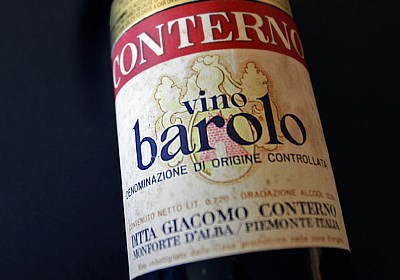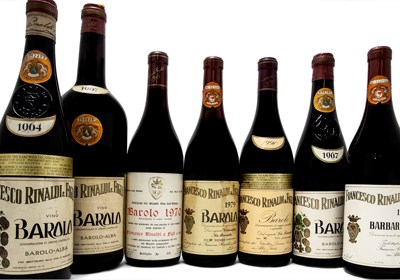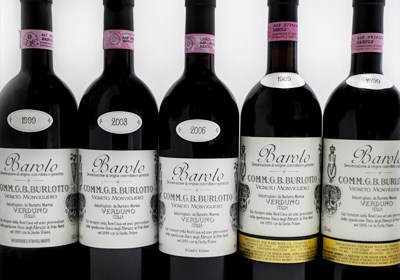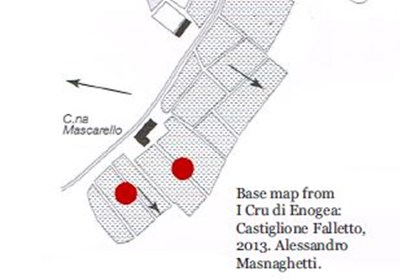
Which site would you like to visit?
By clicking the retail or wholesale site button and/or using rarewineco.com you are choosing to accept our use of cookies to provide you the best possible web experience.
October 31, 2009
When I first learned about Barolo in the 1970s, friends told me that you should open the wine a day in advance. It seemed like nonsense, but it corresponded to the then widely held view that Barolo is so inherently tannic that it never really loses its hard edge.
Of course, neither idea was true, but like many other myths, each was rooted in reality. The Barolos of that era were very tannic, needing decades to come around. And they did demand plenty of breathing, though perhaps not 24 hours worth.
As the years have gone by, I have come to the view that a well-cellared bottle of old, traditionally made Barolo should breathe for at least an hour or two before drinking. This applies especially to Barolos in their 30s, 40s and 50s. In my life, I have seen far too many old Barolos (and Barbarescos, too) uncorked, poured, and drunk, without giving the wines a chance to express themselves.
This past Monday evening, a small group of friends and I had the chance to learn this lesson—not the hard way, but by witnessing a parade of legendary old Barolos blossom before our eyes. But if we hadn’t trusted the wines’ condition and potential, things might have worked out very differently.
Our host was a New England collector who likes nothing better than to share his treasures informally with good friends. This night we got together at a restaurant to drink six bottles from his cellar, arranged in two flights:
Flight One, 1964s: Giacomo Conterno Barolo, Giuseppe Mascarello Barolo, Giacomo Borgogno Barolo Riserva
Flight Two, Bartolo Mascarello: 1958 Barolo Riserva, 1964 Barolo, 1971 Barolo
And to this line-up I added a bottle of the rare 1964 Marcarini Barolo Brunate Riserva di Famiglia.
Decanting the wines in advance was not a problem: they were brought to the restaurant at 4:00pm to be decanted well ahead of our 6:30 arrival. But, as I learned later, when the restaurant’s sommelier decanted the ’64s just after 4 o’clock, he was concerned by the Conterno’s color (which seemed light to him) as well as by the wines’ smell. They seemed old and frail, likely to crack up in the decanter. And so the decanting stopped, and when I arrived at the restaurant at 6:30, the rest of the wines were still in their bottles.
Fortunately, we had three hours of eating and drinking ahead of us, so there was time for the wines to stretch their legs. The ’64s had already been resting for two hours in wide-bottom ships decanters—providing maximum surface area for aeration—and were beautiful when poured. Only the Borgogno—an original release, not one of the later library releases—was anything less than splendid; it seemed unknit and a little short.
There were no worries about the 1964 Conterno, a wine I know well. The color is on the light side, but it always is, with no hint of browning. In fact, this bottle was a glorious ruby, mirroring the feminine elegance of the wine itself. It was perfect when poured and remained so for the next three-plus hours. The ’64 Giuseppe Mascarello was also brilliant, a bit more concentrated than the Conterno, but perhaps without its refinement.
The 1964 Marcarini Riserva di Famiglia, decanted hours earlier in my kitchen at home, was a showstopper. When I first tasted it at home, the nose was dominated by mushrooms—not a bad sign, yet somewhat one-dimensional. But at the restaurant, the nose was bursting with classic scents of truffles and dark fruits. Amazingly dark in color, the wine was massively rich on the palate, begging the question once again: what is this wine that is even more concentrated than the regular 1964 Marcarini Brunate? It must be a special selection, but how much did they make?
Next up was the Bartolo Mascarello trio. Of these, only the 1958 Riserva had the benefit of any decanting, just after I arrived at 6:30. Initially, this wine was not for the faint of heart: the color was a little dull, and both the nose and palate seemed tired. But this is what great old Barolos do. They tease you. They can depress you when first poured, only to uplift you later, their color becoming more vivid, and the hidden fruit emerging, to sweep away any signs of decay.
And so it was with the 1958. After two hours of air, it was transformed, ultimately magnificent and full of life, giving us everything we could hope from one of the very rare Riserva bottlings of Cantina Mascarello.
If only Bartolo could have been there ...
The 1964 Bartolo Mascarello Barolo, without the benefit of early decanting and really only enjoying the time in the glass, was beautiful, but it lacked the ’58’s fireworks. Was the difference the wine or the amount of breathing? Both factors probably played a role.
The 1971 Bartolo Mascarello Barolo may well be the best I’ve ever had. It, too, was only decanted at the last minute, and it continued to gain in richness and concentration over at least two hours. A stunning example of a great wine.
As the evening wound down, there was one more surprise: the 1964 Borgogno Riserva, which had been dismissed earlier. Miraculously, it had come together, its initial awkwardness gone, the palate longer, the texture fuller and richer. All it took was five hours—and, of course, a great terroir, and a noble winemaking tradition.




New discoveries, rare bottles of extraordinary provenance, limited time offers delivered to your inbox weekly. Be the first to know.
Please Wait
Adding to Cart.
...Loading...


By clicking the retail or wholesale site button and/or using rarewineco.com you are choosing to accept our use of cookies to provide you the best possible web experience.

